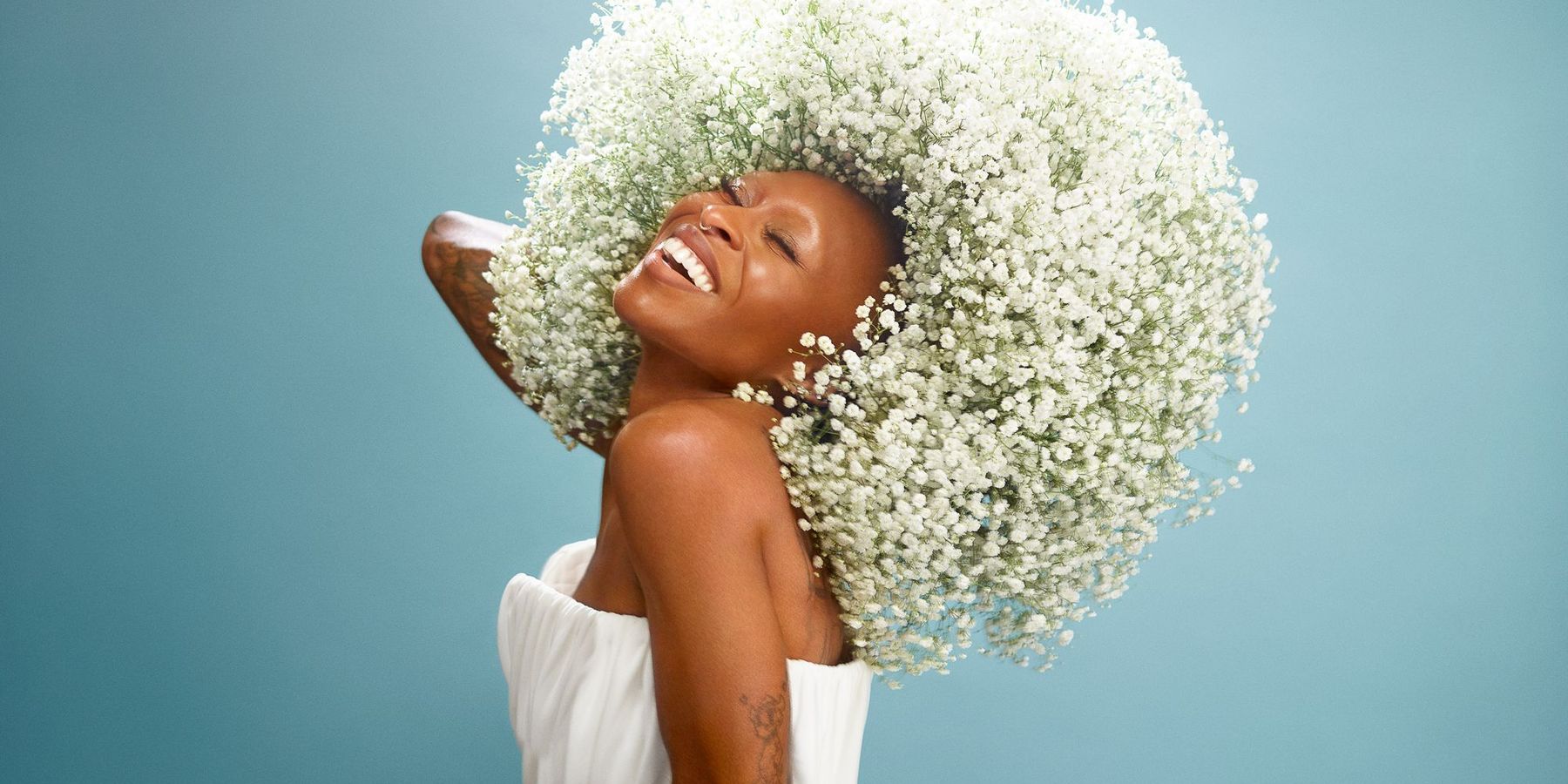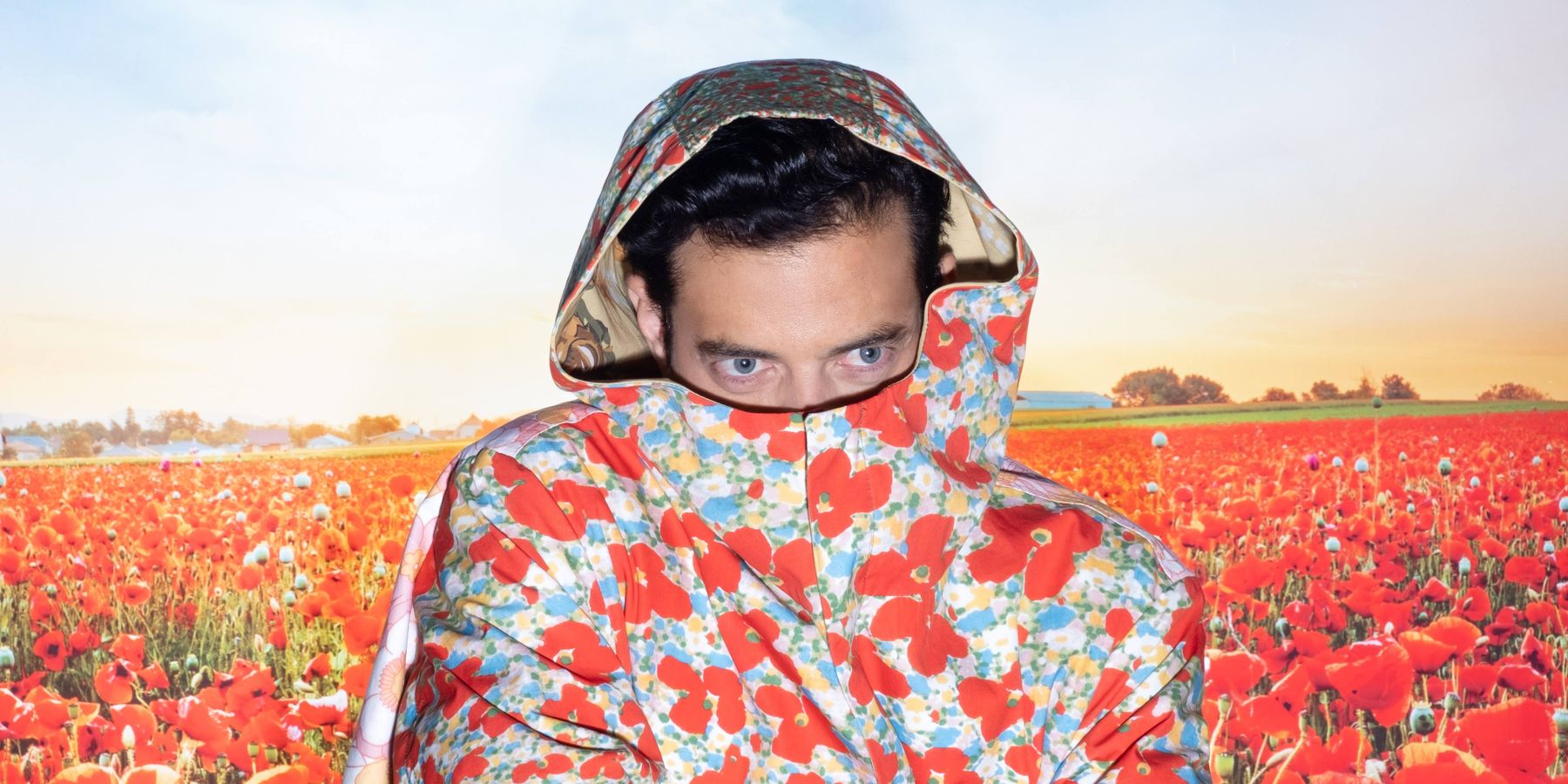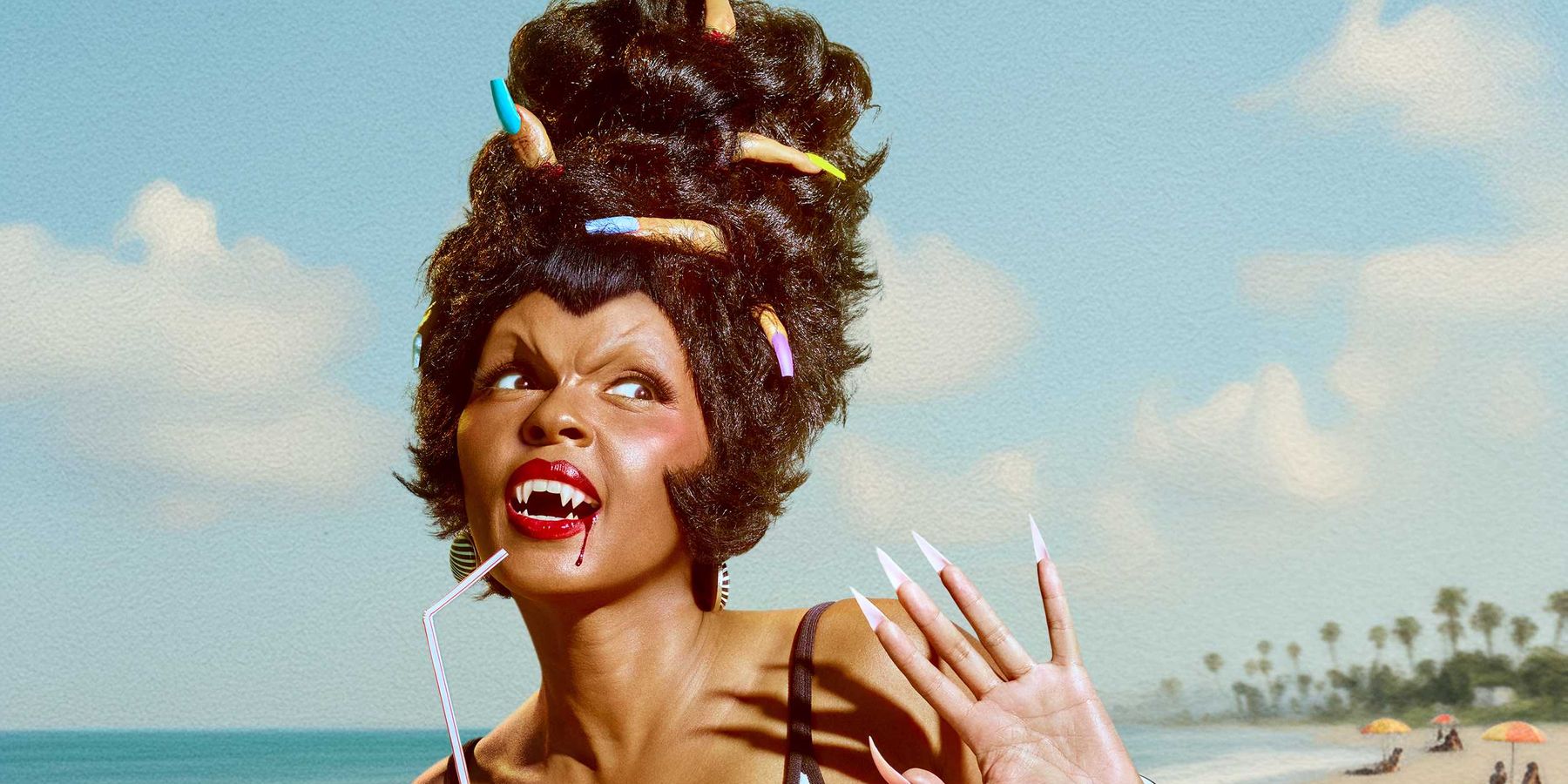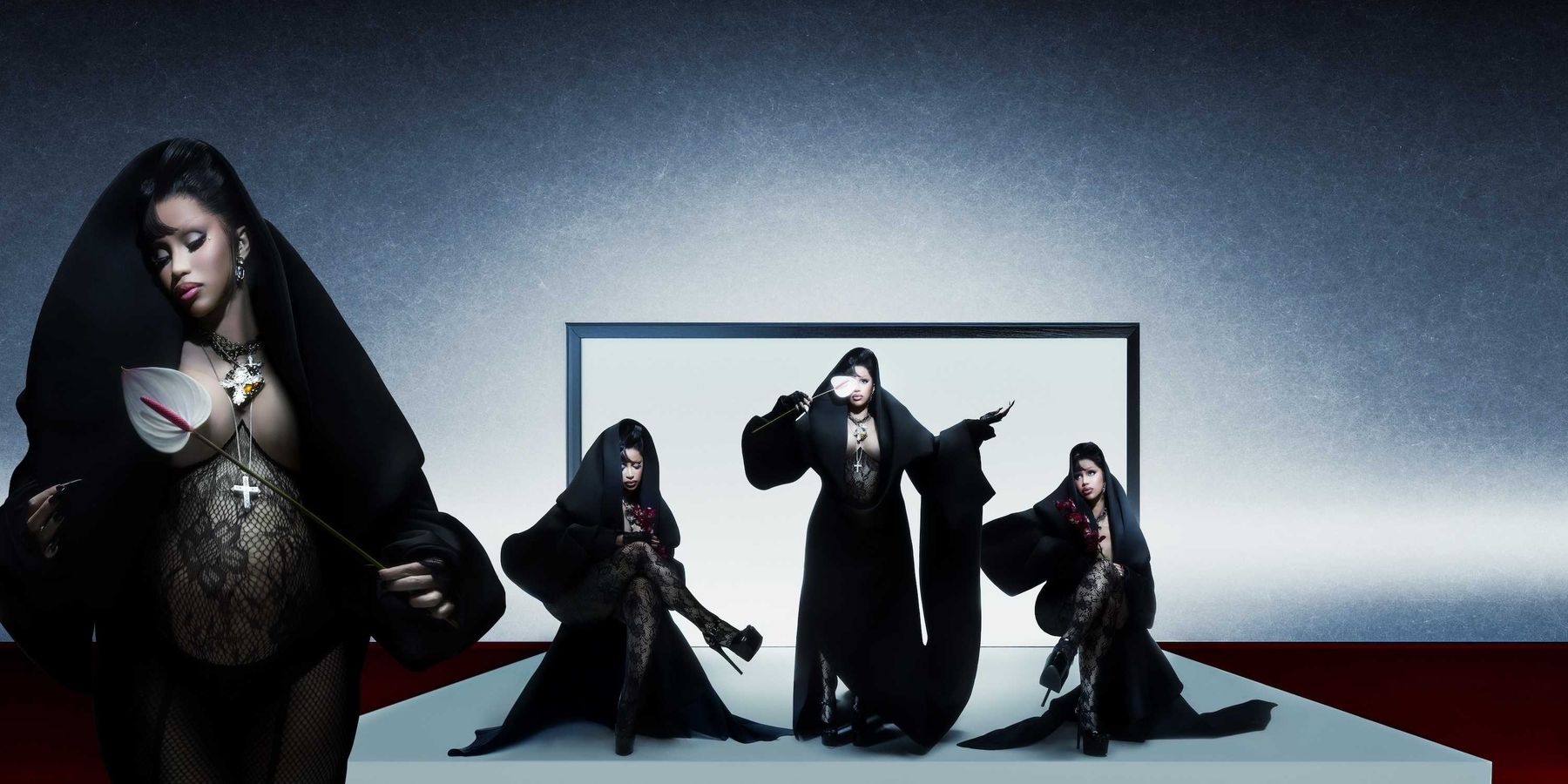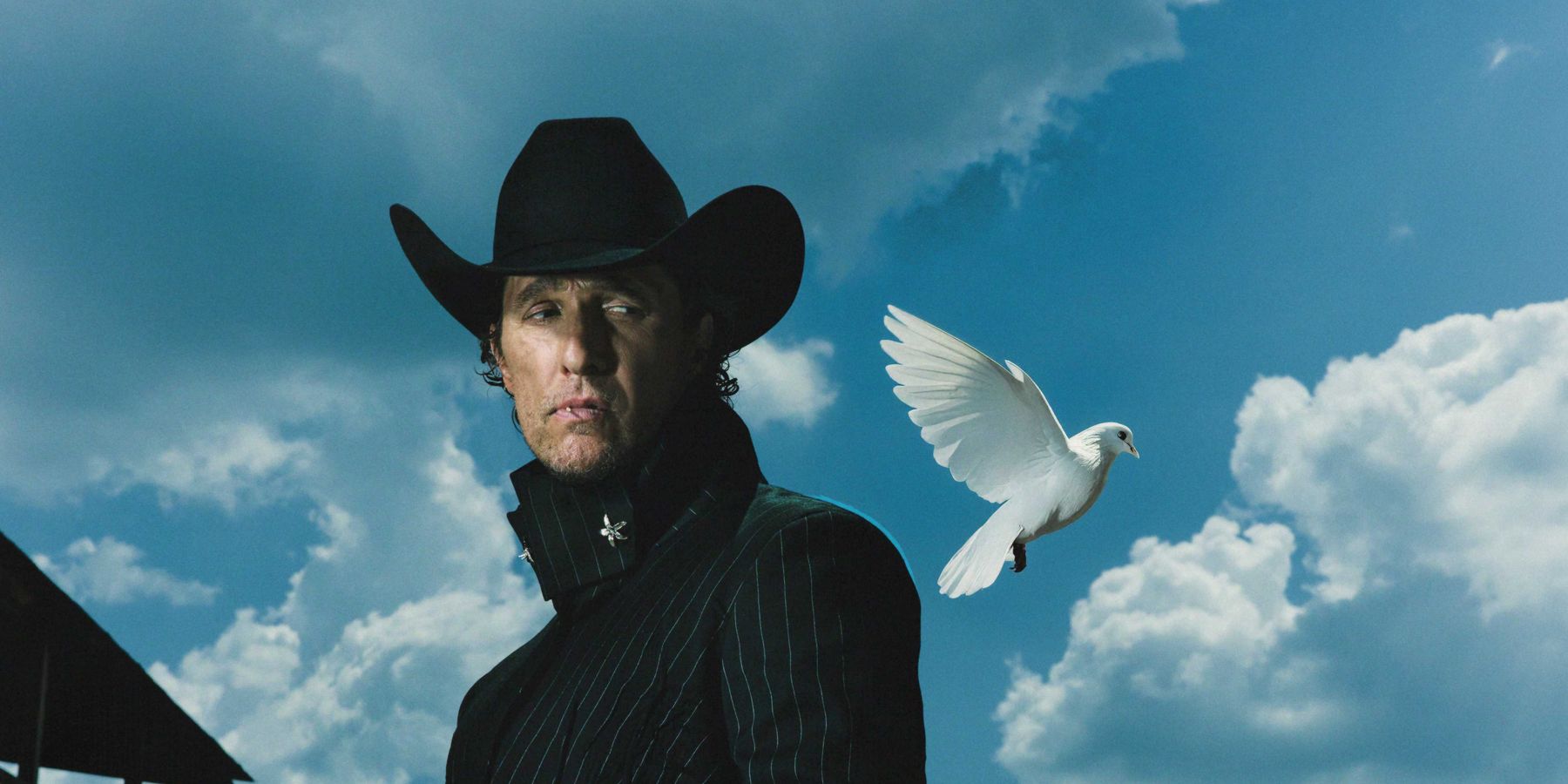
Maggie Dunlap Wants You To Imagine the Worst
Story by Harry Tafoya / Photography by Shaun Pierson
Jan 24, 2024
Across the United States and Great Britain, there are large swaths of land that are out of sight and out of mind, written off by those in big cities as too hopeless or ridiculous or backward to ever be saved. These are areas where history has taken place and been forgotten, where the old wounds of past conflicts have never fully healed and the specter of bad memory has left an eerie static in the air. The beauty of the land is often stark, full of dramatic light and wide-open spaces, which, when photographed, plays oddly well on social media. But as these scenes are reduced to a commodifiable aesthetic online, the larger landscape of bloody conflict and otherworldly laughter gets lost in translation. It is in those infinitely more weird and haunted settings that Maggie Dunlap situates her work.
Throughout her career, Dunlap has adopted the perspective of the void staring back. The artist specializes in unblinking menace, crafting minimalist sculpture and staged photography that draws much of its dark power by leaving the worst things ominously unsaid. Violence and folklore are some of her greatest preoccupations, and watching the ways in which people gather together to make sense of the terrible and overwhelming is far more interesting to her than simply showing gore for its own sake.
After a childhood spent hopscotching across the South, Dunlap initially made a reputation for herself online by tapping into a similar vein of modern American Gothic as her friends, Ethel Cain and Nicole Dollanganger. But where others might have shared photos of a boarded-up church or a heart-shaped bruise and called it a day, Dunlap has always been infinitely more ambitious and drawn from a far deeper and darker sense of place. A major theme of Dunlap’s work is illustrating how the Internet is a distinctly haunted realm, a zone where snuff images are shared recreationally and bad behavior is made mythic off the back of a million ironic TikToks. In pieces like “F.O.A.D.” and “The Bite Command is FASS” (both 2019), Dunlap staged herself in alarmingly passive scenes that towed the line between being deeply wrong and straight-up Tumblr bait. For her recent “True Crime” series (2020-2022), Dunlap infiltrated message boards to share pictures of manufactured bloodbaths as though they were real: using disinformation to stoke the rumor mill, outrage cycle and voyeurism of a captive audience online.
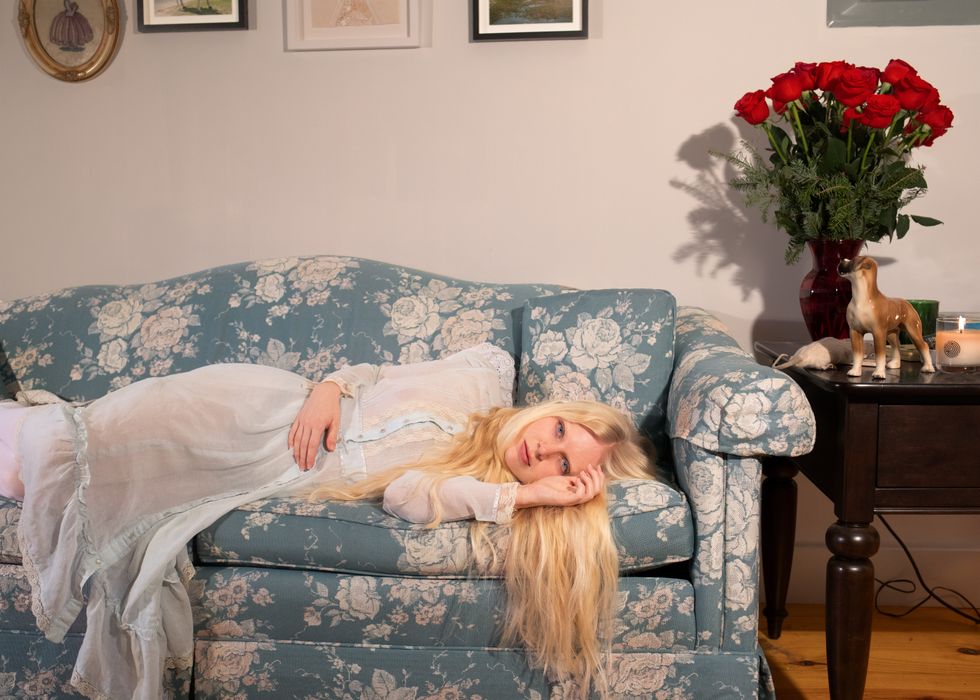
Her latest show Gilded Splinters at No Gallery is both a refinement and departure for the artist. After studying at the Royal College of Art, Dunlap decamped to Plymouth in the southwest of England, a region steeped in history that’s often depicted as a sinister backwater in British horror films. Recognizing the landscape from movies like The Wicker Man and The Blood on Satan’s Claws, Dunlap began an investigation into the ancient folk traditions of the area. What resulted is a series of sculptures brimming with vague and unsettling energy. Pitchforks are impaled into the gallery wall in “The Horseman’s Word” (2023), a piece that both references a secret society of “horse wizards,” and summons to mind a mob of angry villagers, while “The Three Hares” is based on the ancient and obscure title symbol, which occurs all throughout Europe but that’s original meaning has been long since lost to time. The show offers some of the most conventional, capital-A Art that Dunlap has created to date, but the more staid presentation is something of a psych-out, a new and subtle way of bringing the public face-to-face with the unknowable and strange.
Could you tell me about how you first became interested both in British and American folk culture?
In terms of British folklore and folk culture, I always was very partial to the aesthetic of it. As a teen, I would watch movies like The Wicker Man and [be] so drawn to the visuals, but it never really came out in my art until this year. And then once I moved to England, I was like "this is where all of these movies are set." It was the first time I felt so connected to such a distant past, because America is so new. I found being there very transporting, like walking around Dartmoor and being in stone circles was like an incredibly powerful experience for me. And it was just funny to realize that the things I was so aesthetically drawn to, my whole adolescent life, I was now living kind of almost by coincidence. I didn't have the intention to go exploring those things when I moved to England, but it just kind of happened.
Did you actually know any of the stories or did you learn them while you were there?
I basically learned them while I was there. My boyfriend is from Plymouth, which is in the southwest. It's on the border of Devon and Cornwall, and that's also where Dartmoor is, which is the largest natural moors in England, and it's got the highest concentration of stone circles in England, too. He told me a lot of the stories that he grew up hearing. The English fairytales or folktales that I was more familiar with were the fictions of Angela Carter or more modern-day crime like Jack the Ripper. But in terms of more ancient lore, that was something I stumbled upon just by the virtue of dating someone who was from that part of the country.
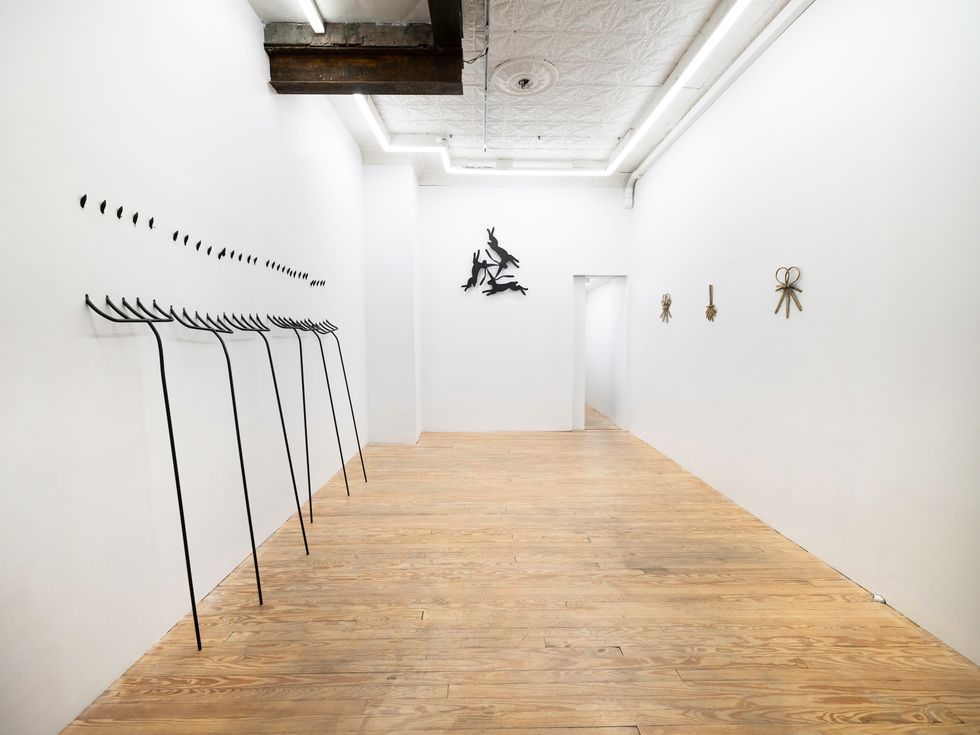
Photo courtesy of No Gallery
Much of your work is about violence and the possibility of violence. What draws you toward it as a subject matter?
It's the thing that I find myself thinking about and speaking to people about the most. I'm drawn to it, I think, because of the way that the dialog around violence is always shifting and the threshold for what "violence" even means is always changing. And I find myself interested in and also frustrated by that, because on one hand I'm like, well, words have meaning and you can't change the meaning of them. But, on the other hand, I'm like, you absolutely can and that is an incredible thing — that the meaning of something as important as the word "violence" changes year-to-year. So, I think using that as the subject matter in my work is my own way to figure out where I stand on it. And it is a very cinematic theme. There’s a lot of charged imagery that can be used in my practice.
What are the ends you're seeking to use violence for, as an artist?
That also changes from project to project, because the work I was making before the sculptures was my true crime work, which in short: I made fake crime scenes, leaked them anonymously on the internet and then watched what happened with them. And that was very much because I wanted to use the captive audience of true crime fans and — I hate to use the word "social justice warriors" — but people who take anger bait and really run with it, I wanted to use them as a tool instead of seeing them as the enemy of art. I feel like people got it wrong that these people are the enemy of art because you can use them to do a performance piece and they're more game to play along than like your average person. I wanted to see if I could turn this phenomenon that people were bemoaning as “bad” for art and culture — I wanted to see if I could make it my art.
What do you make of that kind of bloodless, violence e-girl aesthetic online? It's funny because you're also someone who has very much contributed to the rise of that in the first place, actually.
Absolutely. I'm really not interested in gore. And I don't think that I'm above the sharing of gore images, but I'm just not interested by it, it doesn't really do anything for me. I'm way more interested in what you said — I know you're speaking about the phenomenon as being "bloodless" — but also these types of crime scene photos that go viral are maybe not bloodless, but they are gutless, like literally there is not that much evisceration happening because it loses the enticing aspect where you want to zoom in and find the bit of gore. When I was making these images, I wanted it to be a type of image that you would want to get closer to and see if you could see something really bad happening in it. But yeah, I think the appetite for those types of images is definitely borne of Tumblr for sure, probably Reddit in these communities of people seeking out cursed images. And I was present for the rise of that online, and I was the right age at the right time to really get into it but also to disseminate my own versions of them even before I was making this kind of work.
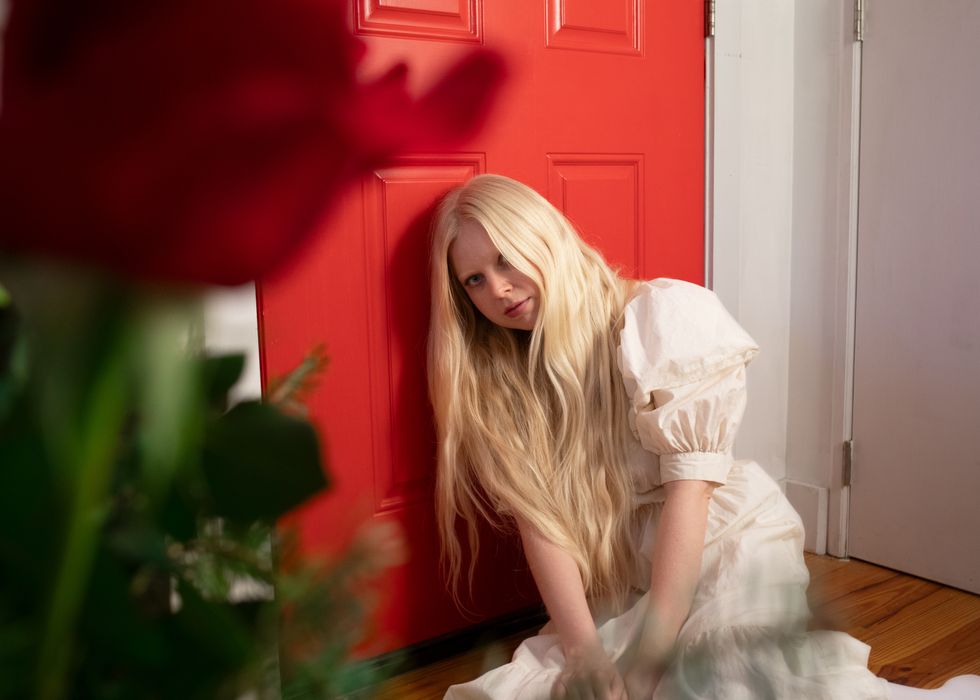
The corn dolly sculptures in the show are really interesting, because apart from the kind of folk horror value, they're also very similar in the way that you wear your hair. To what extent was that a self-portrait?
That was one of those things that's not on the surface intentional. But it is interesting that the things that we're drawn to visually are often things that are a few steps removed from us, but in the same category. Women will usually think that the most beautiful type of woman is someone that kind of looks like them but better. So, seeing the images of these corn dollies from the Crying The Neck harvest festival, I was obviously drawn to them because they are made of wheat and hay, and they are braided and woven and then tied with ribbon, and that is exactly what I do with my own hair all the time. There’s something specifically about having hair that can be braided that's got some vaguely orthodox religious or just ancient tone. And then when you see relics from another time period that [visually] mimic you — there's a reason why I was so drawn to it. This is a very, very roundabout way of saying that yeah, obviously I like it because it looks like my hair, but I didn't really clock that until you said it.
We've mentioned before that you had associations online with some famous girlies. The ones that come to mind are Ethel Cain and Nicole Dollanganger. You were all online at the same time, you were all engaging with each other, and it seems like you all developed a very similar aesthetic to explore some very dark themes. You're all distinct artists, but what do you think was the kind of common basis for what you were all exploring?
I feel like the aesthetic that people associate with the people you just named: with Nicole, who is one of my dearest friends and I love so much, and Ethel Cain, who is a genius and I also love so much, I think is ironically kind of born from our IRL lives. Because being in Mississippi for so much of my childhood and adolescence, I really saw a lot of things that I would then see reflected back to me in these highly reblogged photos of trailer parks or abandoned houses or dilapidated structures. And I was almost shocked when I first started to see that seemingly so many people on the internet responded to these things, ‘cause I'm like, Oh, this is just my visual culture, this is the sort of landscape that I've just always been in. I think that there's a universality to it, that unless you live in a major city, you probably see places in America that look like this. But to be able to use the things that you grew up driving past and thinking were almost — not embarrassing, but like nothing special was there — and then being able to use that for your art, that's the best thing ever.
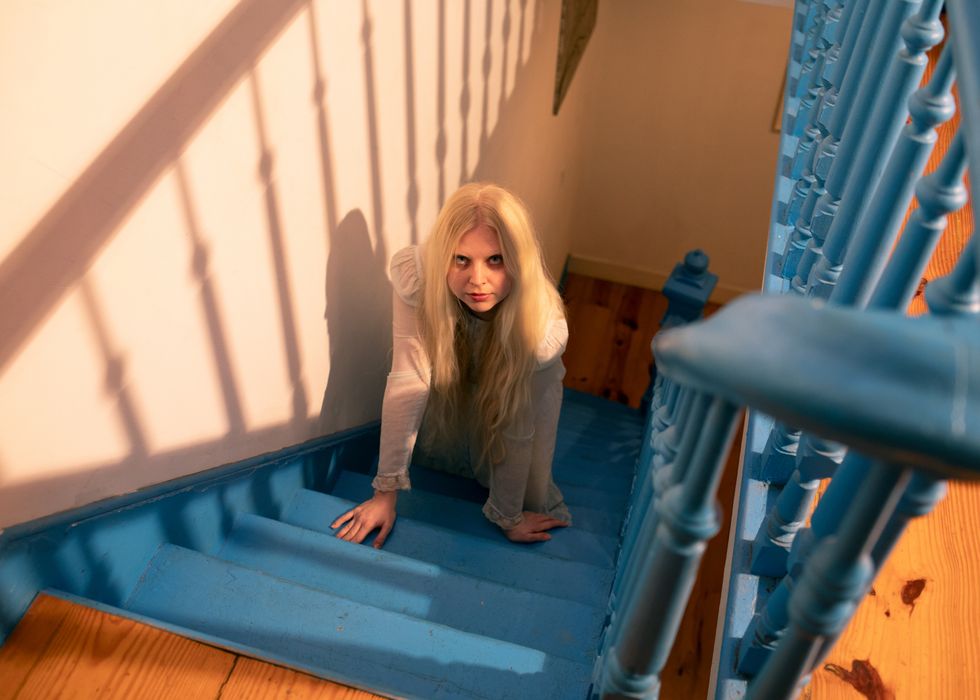
Did you find parallels between the American South and the southwest of England?
I really did. People talk a lot about England, as having a North-South divide that's flipped, with people in the North being sort of looked down upon by the people in the South, but that kind of excludes the Southwest. The Southwest of England kind of feels like its own country. The language is different. The accents are incredibly different. Some people still speak Cornish, which is crazy. But it is like a place unto itself. The American equivalent of British folk horror is called "hicksploitation": movies like Deliverance or The Texas Chainsaw Massacre. I really loved that I was once again back in a place that is used as the scariest setting, like the worst place for your car to break down if you're in England. There is the stereotype of walking into a pub in the Southwest and it falls silent and everyone looks at you as the outsider, and I have felt like that before. They're both sort of haunted places, haunted by something supernatural, but also there's a sense that the people that choose to live somewhere so isolated must have something to hide.
For this particular show, it seems like this is a breakthrough in terms of really paring back your style. Why the move toward minimalism? What do you think it allows you to accomplish?
It’s a great Trojan horse for sneaking in maybe some more baroque, fanciful ideas that need to be carried by something that reads as "high art." It would be easy and obvious to go in a direction that's almost like set dressing. I really could have incorporated elements of natural things that would make a more immersive environment. But I really wanted to embrace what it means to make big metal minimalist sculptures that actually have a lot of ideas that would probably be ignored or scoffed at if they came in a different package. I also think that my work is very specific to the medium. When I was making the work that lives on the internet, I wanted it to look like internet photos that had been screenshotted many times, shared many times, the types of images that people would want to share. When working with metal or brass or steel or anything like that, I want them to look like what they are, and I want it to be like there is no other way that these sculptures could exist. They have to look the way they look. They have to take up this amount of space because you can't take up space online. I shift my approach to making things depending on the medium that I'm working with.
Do you kind of foresee yourself sticking to a more IRL practice or is it up in the air?
I think it depends. The work I was doing online was really, kind of solely because of COVID and being in lockdown. I was at the Royal College of Arts and I suddenly no longer had access to my studio or in-person critiques. It was all over Zoom, and I was like, well fuck making a drawing in my house and then holding it up to my computer screen to be critiqued. I'm going to do something that lives online, everything's online now. So, I'm going to make work that can only really exist online.
And that's kind of what my focus was for the last few years. I think once the world started to open up, I wanted to take advantage of the fact that people could be out again. And I wanted to do something that was, like I said, wholly dependent on the fact it was in a space where people would come in and interact with it, etc. The online part of my practice is still, I think, very important. I still have some things going that I have not yet publicly owned. But while I can make something that has the same sort of weight, like a crime scene photo, but in a different medium in a different context, I really love to do that. I really do love the real-life experience, and I really want to make something that looks better in person than it does photographed online.
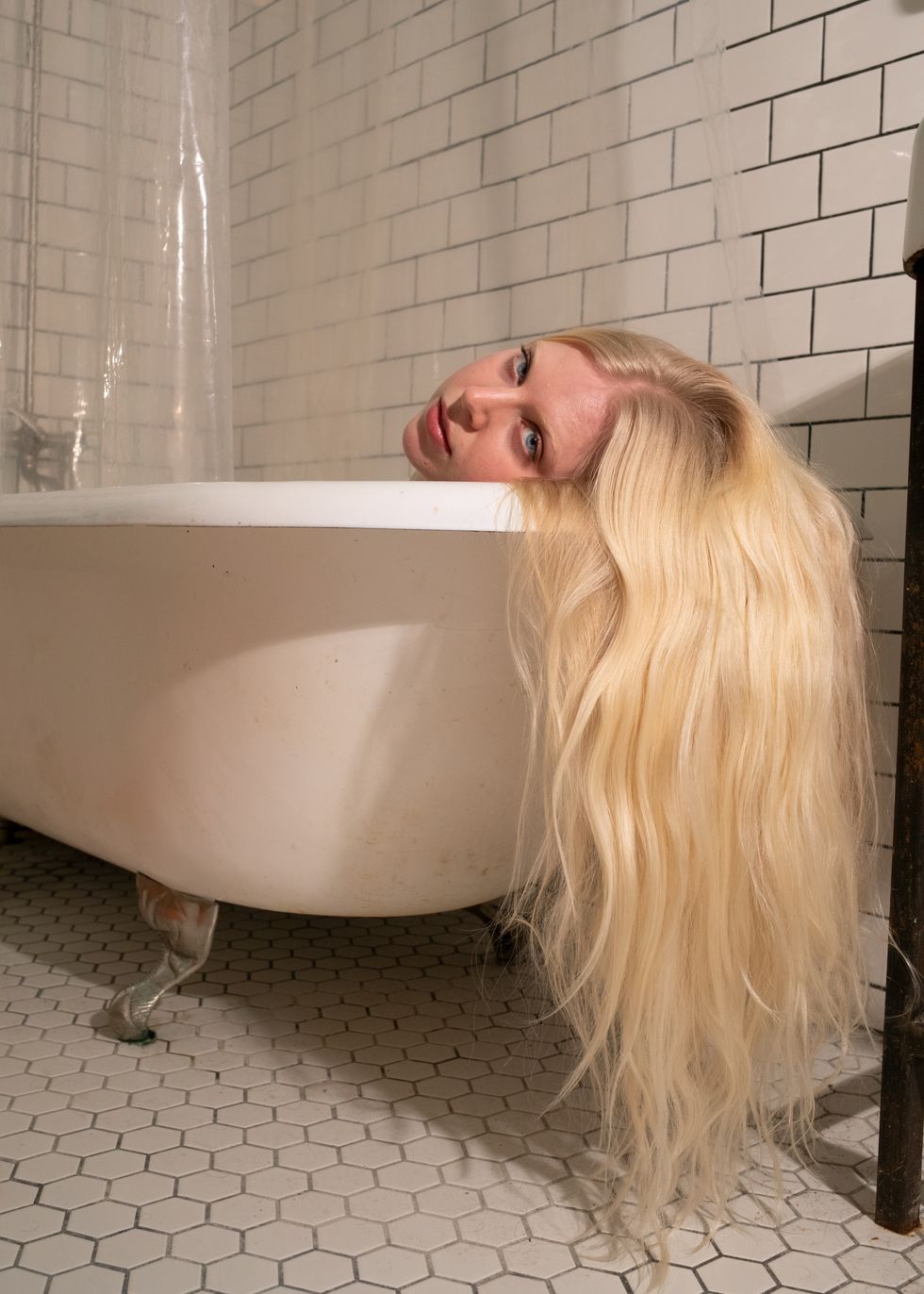
Photography by Shaun Pierson
Related Articles Around the Web
MORE ON PAPER
Entertainment
Cynthia Erivo in Full Bloom
Photography by David LaChapelle / Story by Joan Summers / Styling by Jason Bolden / Makeup by Joanna Simkim / Nails by Shea Osei
Photography by David LaChapelle / Story by Joan Summers / Styling by Jason Bolden / Makeup by Joanna Simkim / Nails by Shea Osei
01 December
Entertainment
Rami Malek Is Certifiably Unserious
Story by Joan Summers / Photography by Adam Powell
Story by Joan Summers / Photography by Adam Powell
14 November
Music
Janelle Monáe, HalloQueen
Story by Ivan Guzman / Photography by Pol Kurucz/ Styling by Alexandra Mandelkorn/ Hair by Nikki Nelms/ Makeup by Sasha Glasser/ Nails by Juan Alvear/ Set design by Krystall Schott
Story by Ivan Guzman / Photography by Pol Kurucz/ Styling by Alexandra Mandelkorn/ Hair by Nikki Nelms/ Makeup by Sasha Glasser/ Nails by Juan Alvear/ Set design by Krystall Schott
27 October
Music
You Don’t Move Cardi B
Story by Erica Campbell / Photography by Jora Frantzis / Styling by Kollin Carter/ Hair by Tokyo Stylez/ Makeup by Erika LaPearl/ Nails by Coca Nguyen/ Set design by Allegra Peyton
Story by Erica Campbell / Photography by Jora Frantzis / Styling by Kollin Carter/ Hair by Tokyo Stylez/ Makeup by Erika LaPearl/ Nails by Coca Nguyen/ Set design by Allegra Peyton
14 October
Entertainment
Matthew McConaughey Found His Rhythm
Story by Joan Summers / Photography by Greg Swales / Styling by Angelina Cantu / Grooming by Kara Yoshimoto Bua
Story by Joan Summers / Photography by Greg Swales / Styling by Angelina Cantu / Grooming by Kara Yoshimoto Bua
30 September
